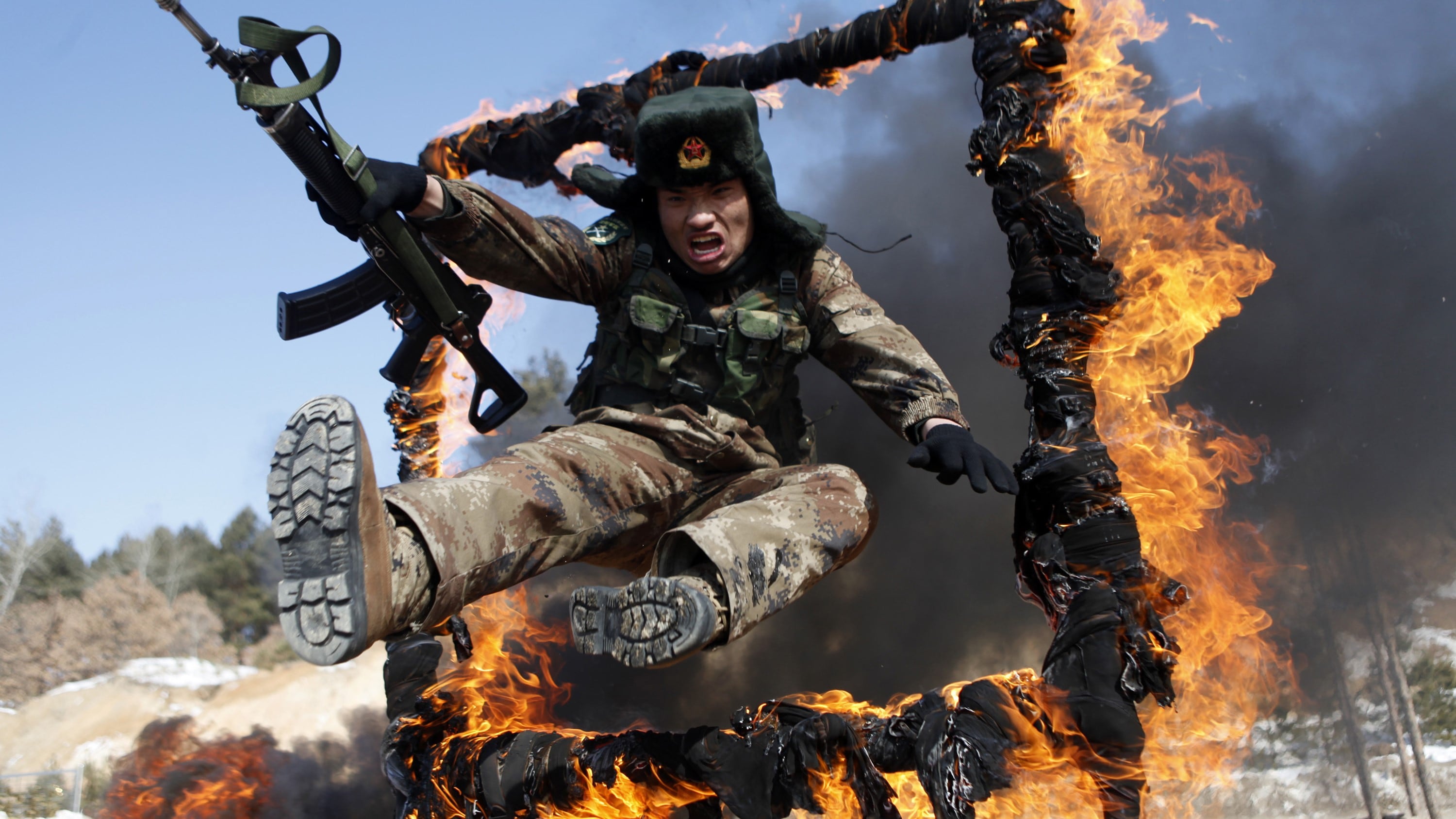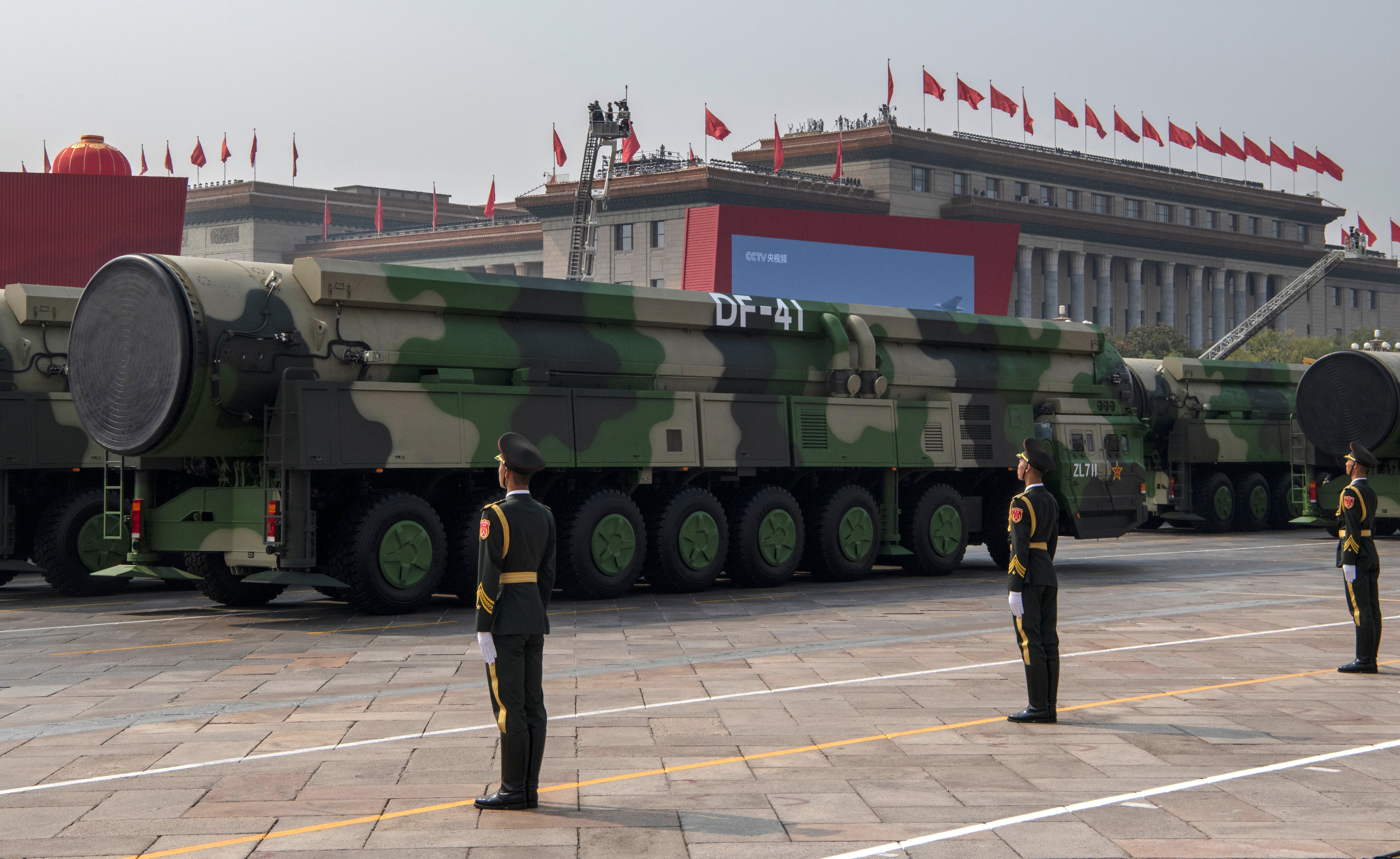WASHINGTON — Since the release of the National Defense Strategy in early 2018, top Pentagon officials have stressed that the department needs to keep its focus on the long-term challenge from China. Now, with the creation of a new office focused solely on China, officials in the department hope to take a major step forward in that effort.
In June, the Department of Defense discreetly created a new job: the deputy assistant secretary of defense for China. Deputy assistant secretaries of defense, or DASD, serve as civilian subject matter experts, three levels down from the undersecretary of defense for policy, traditionally one of the most powerful positions in the Pentagon. The new job, according to a department statement, will serve as “principal advisor to the Secretary of Defense on all things China and will be the single hub for policy and strategy development, oversight, authorities review, and national-level interagency integration to align the Department’s efforts on China.”
On Tuesday, Randall Schriver, the assistant secretary of defense for Asian and Pacific security affairs, told Defense News that the new position is something he has considered for some time. Speaking at the Brookings Institute, Schriver described the role as both inward and outward facing.
Outwardly, the office will help craft and maintain the military-to-military relationship with China — something Schriver, who is headed to China next week, said top Chinese military officials want to serve as a “stabilizing force” in overall relations with the United States.
“The inward part [is] to help us drive alignment on China across the department as we carry out our National Defense Strategy and its implementation. ... A lot of that is to help us internally, with the Joint Staff and the services, to make their respective decisions” around China, Schriver said.
RELATED

Before the new office was created, there were three DASDs each with a unique focus in the region: one on Afghanistan, Pakistan and Central Asia; one on Southeast Asia with India, members of the Association of Southeast Asian Nations, Australia and New Zealand; and one on East Asia, tracking Japan, South Korea, Mongolia, China and Taiwan.
The new job is the only one focused on a single country of the now 21 existing DASD-level positions. And along with the creation of the new role came a reorganization of the Southeast and East Asia portfolios, breaking down regional barriers to align nations like Australia and Japan that have strong ties. That broad rearrangement is where both the risks and rewards of the change happen, according to a quartet of former defense officials.
Eric Sayers, a former special assistant to the commander at U.S. Pacific Command and now an adjunct senior fellow with the Center for a New American Security think tank, thinks the change is good, in part because of how it specifically decouples the management of China from the other responsibilities assigned to regional DASDs.

“This change will essentially empower the DASD East Asia to focus on alliance management and integration across the Asia-Pacific [region] while freeing them up from what I understand can be the time-consuming but important work of the bilateral U.S.-China military relationship,” Sayers said. “Changes like this at DoD occur slowly, but this reorganization and the building of a new DASD office signals a long-term commitment and a shift in DoD priorities consistent with the National Defense Strategy.”
Elbridge Colby, who as the DASD for strategy and force development at the start of the Trump administration had a major hand in crafting the National Defense Strategy, also supports the move, calling it “an incremental step forward that makes increasing focus [on China] more [achievable].”
“It separates the high-end alliance management task from the China bilateral work,” Colby said. “The [People’s Republic of China] is enough to take on for one person. The China DASD will presumably deal with bilateral discussions, mil-to-mil, crisis management. The other regional DASDs will deal with things like improving posture and deepening interoperability with Japan, Australia and South Korea.”
RELATED

Potential risks
But others aren’t so sure the move will work out, precisely because of how it may split the regional focus. Mara Karlin, who proceeded Colby as DASD for strategy and force development, warned that reorganizations “create new and different stovepipes, and it will be crucial to ensure this new DASD-ship is aligned with both the broader regional approach and the internal building dynamics.”
And while Michèle Flournoy, who served as undersecretary of defense for policy from 2009 to 2012, sees a greater focus on China as a wise move, she worries about the unexpected effects of creating a new office.
“I’ve found, in general, that whenever it has a problem, the first tool DoD reaches for is ‘let’s reorganize the boxes on the chart.’ Every time you do that, you create new seams, and then you have to compensate,” she said. As an alternative, she pointed to a senior-level working group formed during her time at the Pentagon that focused on China without creating new structures.
The new DASD position runs the risk of creating a focus on China that ignores regional allies and partners who will play a major role in attempts to shift China’s behavior, Flournoy said. Given the lack of real interaction or cooperation between the Chinese and U.S. militaries, the DASD spot may not be the best tool for the job, she added.
Still, “if you want someone whose whole job every day is to try and rally the department’s resources and reach across all the different services and Joint Staff to make sure we’re all rowing in the same direction, I get it,” she said — assuming the role communicates with the other regional experts and assuming a good staff is assembled.
“You need some China hands in there, but you also need to know what the [planning] office is doing and have it be very tightly linked to [U.S. Indo-Pacific Command] planning. You need people with backgrounds in strategy, security cooperation,” she said. “It has to be a different kind of staff than you would typically have in a regional DASD office if it’s going to be effective.”
For his part, Schriver pushed back on the idea that the China role will lead to isolation, in part because that kind of interaction is baked into the design of the job.
The office will “maintain the regional affairs, they maintain positions that actually strengthen cooperation across the enterprise,” he told Defense News. “So we’re building out a China DASD-ship that has people who liaise with the other regions, who liaise with the other functional bureaus such as strategy and plans. So it’s actually strengthening [those ties], not stovepiping. It’s just the opposite.”
Some of how that office is organized and staffed will fall to the first DASD for China, Chad Sbragia, a retired Marine Corps officer with significant history in the region. He most recently served as the director of the Marine Corps’ China Research Group. While on active duty, Sbragia spent time in China, including at the U.S. Embassy in Beijing. After retirement, he worked as the deputy director of the China Strategic Focus Group inside U.S. Indo-Pacific Command from 2011 to 2018.
While at the command, Sayers became acquainted with Sbragia, and calls the retired Marine an “exceptional pick to be the first DASD for China.”
“He is a genuine China practitioner who has been doing unsung work behind the scenes in our government for the last decade,” Sayers said. “It’s really people with skill sets like his that we need to focus on developing by the dozen over the next decade if we are going to have a strong bench of Asia hands.”
Aaron Mehta was deputy editor and senior Pentagon correspondent for Defense News, covering policy, strategy and acquisition at the highest levels of the Defense Department and its international partners.








